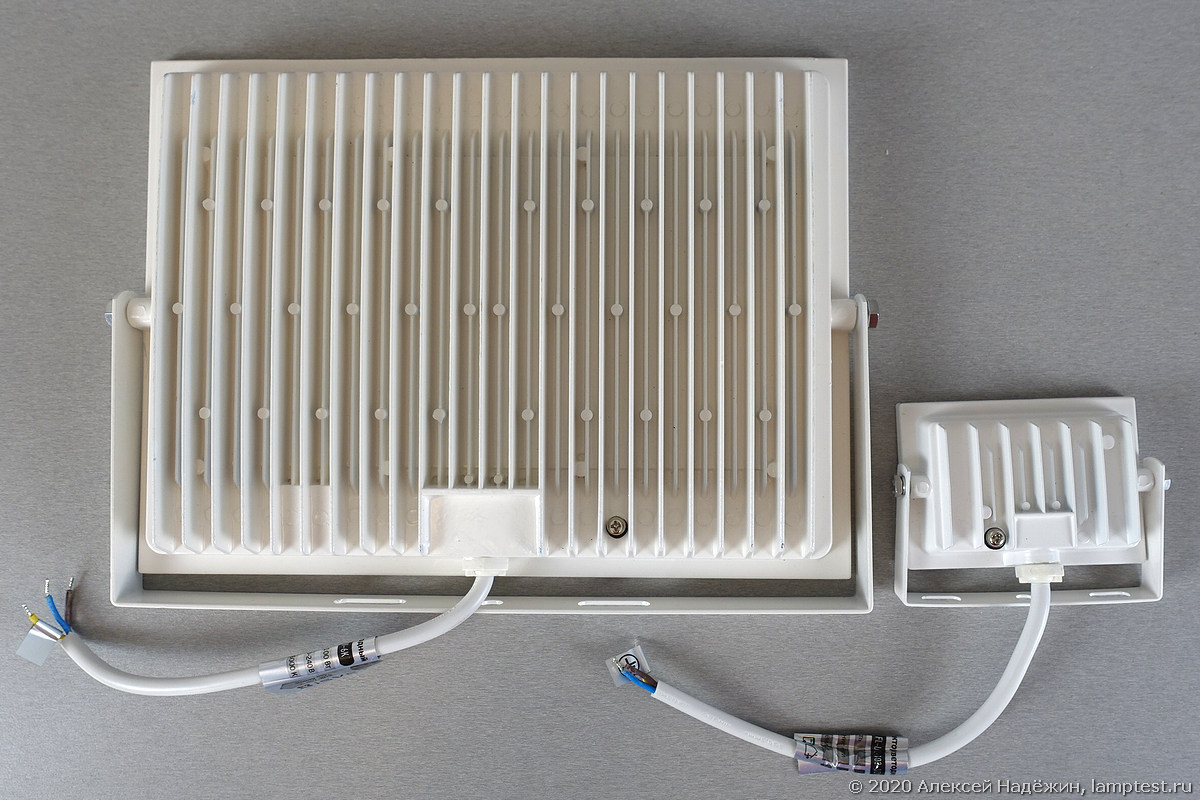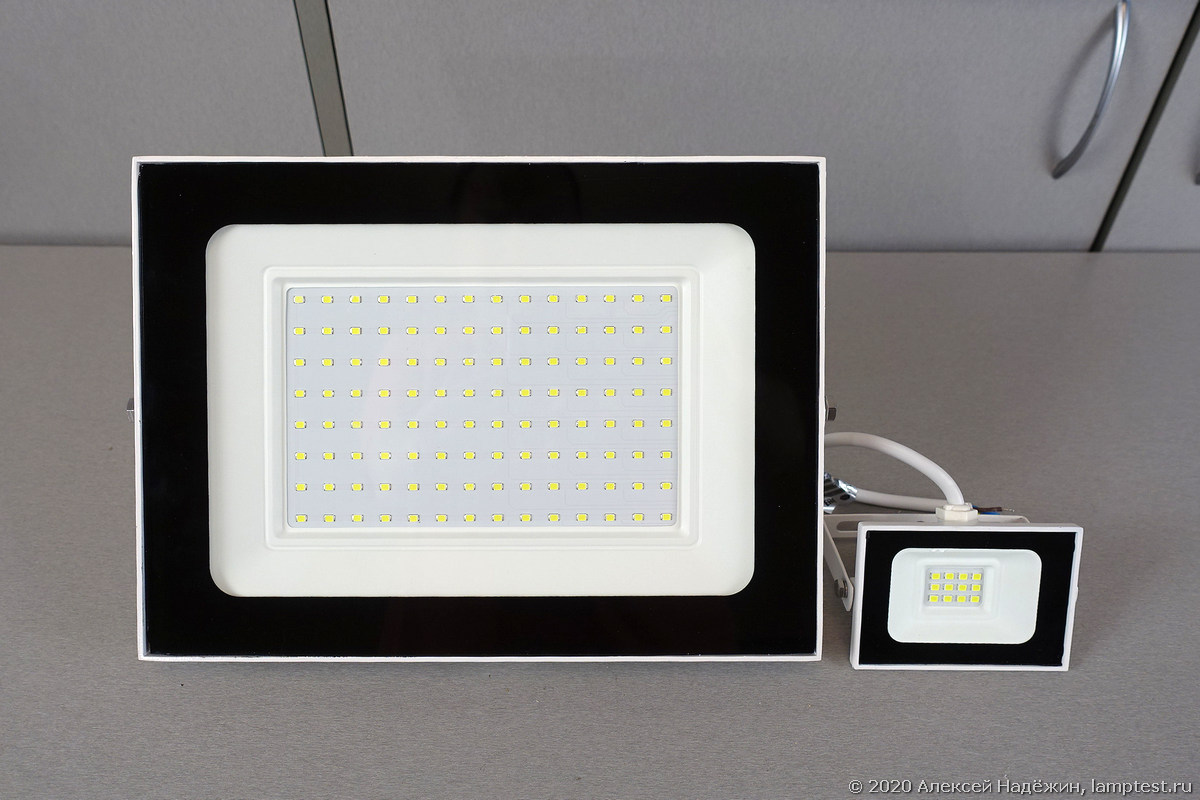Now I have the opportunity to test and study the spotlights of the same brand.

The iSvet brand belongs to the Electrosnab-Kuban company. The main idea of the brand is the release of inexpensive LED products, the power and luminous flux of which honestly correspond to the declared ones, and the LEDs work in a sparing mode that does not cause premature failure.
All iSvet floodlights have a color temperature of 6000K (cool white light).
There are seven floodlights in the line: 10, 20, 30, 50, 70, 100 and 150 W. They cost from 213 to 2499 rubles and are sold on Beru and other online stores.
I tested the first six models.
The metal housings of the floodlights are painted white.

The front panel is covered with glass, behind which is a black frame. In the photo there are 100 W and 10 W floodlights.

I tested the spotlights (after a half hour warm-up, of course) and got the following results.

The power and luminous flux of the 30-100 W models are even higher than those stated: at a voltage of 230V, the floodlights give 7-10% more light than indicated on the package. For 10 and 20 W models, the luminous flux corresponds to the declared one, and the power is slightly less than the declared one (by 0.5-0.9 W).
According to the measurement results, the CRI (Ra) color rendering index for all the projectors was 70-74. This is perfectly acceptable for street lighting.
The floodlights are based on linear drivers, so their brightness changes when the voltage in the network changes and drops when the voltage is low. When the mains voltage drops from 230 to 212-220V (exact values are shown in the table in the Umin column), the brightness drops by 5% of the nominal. With a mains voltage of 200V, the brightness of a 50-watt floodlight drops by 13%.
The measured light pulsation coefficient for different models was from 84 to 100%. This ripple is clearly visible.
I talked about the ripple with the manufacturer and in his opinion the pulsation of the light on the street, where floodlights are used, is not important. He believes that it is more important to ensure honest parameters and long-term performance than no ripple.
The pulsation of street lights is quite common. A mercury lamp DRL has a pulsation coefficient of about 60%, a sodium HPS (orange light familiar to everyone) is about 80%.
ISvet floodlights have an honest power and luminous flux. Power factor (PF) is 0.94-1. Linear drivers are used in floodlights, so it is better to use them where the mains voltage is stable. Color rendering indices are 70-74. Light ripple factor - 84-100%. The manufacturer gives a 2-year warranty.
I want to ask you if the lack of pulsation in street lights is important to you. At the same time, I will ask you what you think the color temperature of street lights should be.
© 2020, Alexey Nadezhin